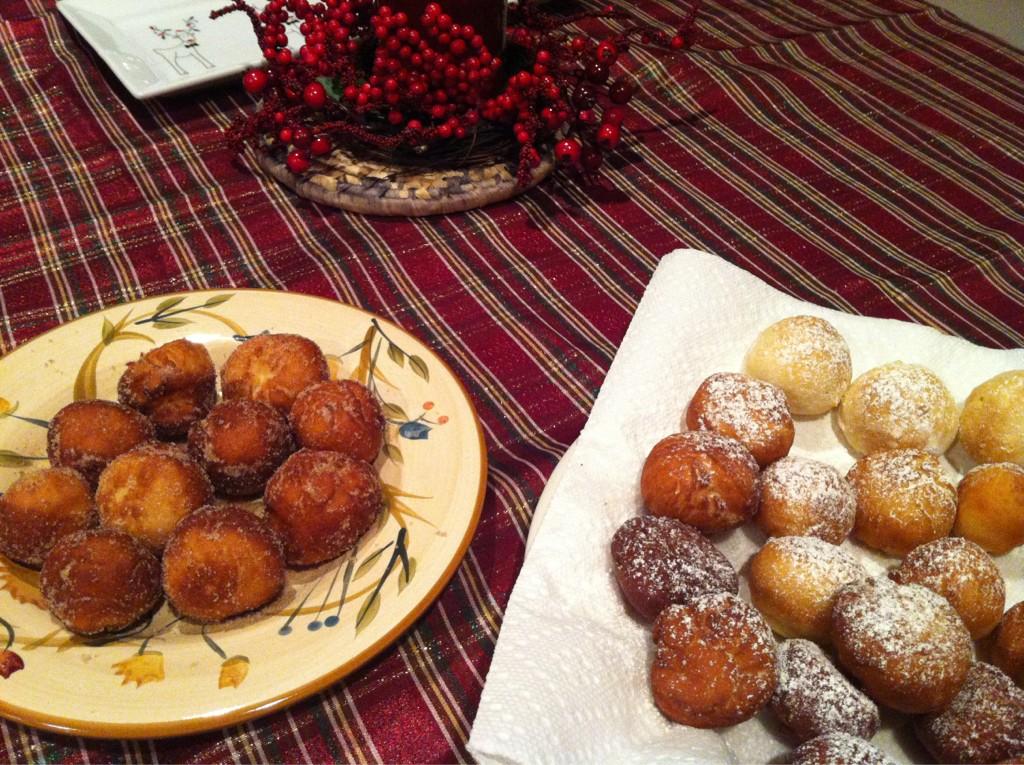Thursday, December 17, 2009
Baking 101: Let's Talk Ingredients
I am amazed that people think I never make mistakes in the kitchen. Recently, while making cookies for school, I misread my own recipe and added 2 eggs instead of 1. I realized only after the second batch was made. I thought that maybe it could be fixed with some extra flour but decided to not take a chance and test it out myself. The result was a good tasting cookie but almost more like cake. It was fluffy, not crisp. And, it was definitely too sticky for rolled cookies. 2 batches of new sugar cookie dough later and I think I learned my lesson.
When I told my friend this story, she was happy to hear I'm not perfect (I don't think that either!). She did, however, ask me to write about how I was able to recover the mistake. There are times when it's not possible. In one class that I taught earlier this year, someone added 2 cups of sugar to a scone batter instead of 1/4 cup. Yup; couldn't fix that one but I tried. Anyway, it got me to thinking that understanding what the ingredients do is very important.
When I bake, I use certain ingredients which inevitably affects the flavor and texture. I also realize that I don't always specify which ones I use in my recipes. Here's a breakdown of common baking ingredients with my preferred type and why.
Flour: I use unbleached white flour when I bake pies, sugar cookies and pastry; anything light in color. Flour that is bleached naturally as it ages is labeled "unbleached," while chemically treated flour is labeled "bleached." Ok, why would I want to use something that is chemically treated? Check the labels.
I use whole wheat pastry, white wheat flour (milled from a white wheat) or sometimes just wheat flour for things like pancakes, waffles, muffins (unless it's light, like apple or blueberry), and dark cookies like ginger or oatmeal. Often I use half white and half wheat just so that it's not too heavy or dry.
Sugar: In most recipes, you can reduce the amount of sugar by 25%. If a recipe calls for 1 cup of sugar, try 3/4 cup next time and see what you think. There comes a point where a recipe may not have enough sugar so test it.
I have been buying organic white sugar for a couple of reasons. It has not been genetically modified so I look at it as being more "pure" as well as the fact that it has not been subjected to pesticides. I buy it in bulk which saves money on packaging. When I use it in a recipe, I notice the dough is not as light; almost beige. After it's baked, though, you can't tell the difference and if anything, the flavor is better.
People often ask "What can you use in place of sugar?". Well it depends upon the recipe. I learned my lesson to not substitute sucanat (Sugar Cane Natural; similar to brown sugar) in a recipe for a lemon tart. It looked like a pecan pie. But in most recipes, you can use less sugar and use other natural sweeteners. For example, if a muffin recipe calls for 1 cup of sugar, I would likely use 1/2 cup of sugar and 1/4 cup of brown rice syrup or agave nectar. If it's a pumpkin or carrot recipe, I may only use brown sugar with either of the sugar options. All of these have calories but some sweeteners are easier for our bodies to process. Plus, because they are sweeter, you can use less. Don't be afraid to play with the sugar in a recipe; unless you are baking for a special occasion. Save testing for your family or friends who enjoy experiments!
Butter: The only time I use salted butter is for toast. Otherwise, everything I bake or cook with is unsalted. I also try to use only organic or at least from a source like Clover. You can substitute oil for butter in many recipes. Some people don't like canola oil because of the way it is processed. I'm moving back to natural ingredients and use butter in baking. Besides, it just tastes so good!
Chocolate: There are many opinions of chocolate out there; I know. When it comes to baking, use the good stuff like Ghirardelli, Guittard, or Scharffen Berger. Yes, it's expensive but worth it.
Baking Powder versus Baking Soda: Both of these ingredients are used for leavening. Baking Powder is a combination of baking soda, one or more acid salts like cream of tartar and some type of starch. If a recipe calls for baking soda, you can use baking powder but not the other way around.
Baking soda is much stronger than baking powder, about four times. It reacts with the acid in an ingredient in a recipe like yogurt, lemon juice or chocolate. It begins to react as soon as it is mixed with liquids so make sure to bake the batter immediately.
When both are used in a recipe, the baking powder does most of the leavening. The baking soda is added to neutralize the acids in the recipe plus to add tenderness and some leavening.
Too much baking powder can give your cake, cookie or waffle a bitter taste. This is why you can't always double or triple recipes. Most times it's better to make the recipes one at a time.
Anything else? I think I covered most of it. Oh, yes, make sure to add salt to your baked goods. It does make a difference.
Subscribe to:
Post Comments (Atom)







1 comment:
these cookies look delicious! just subscribed to this wonderful blog
Post a Comment